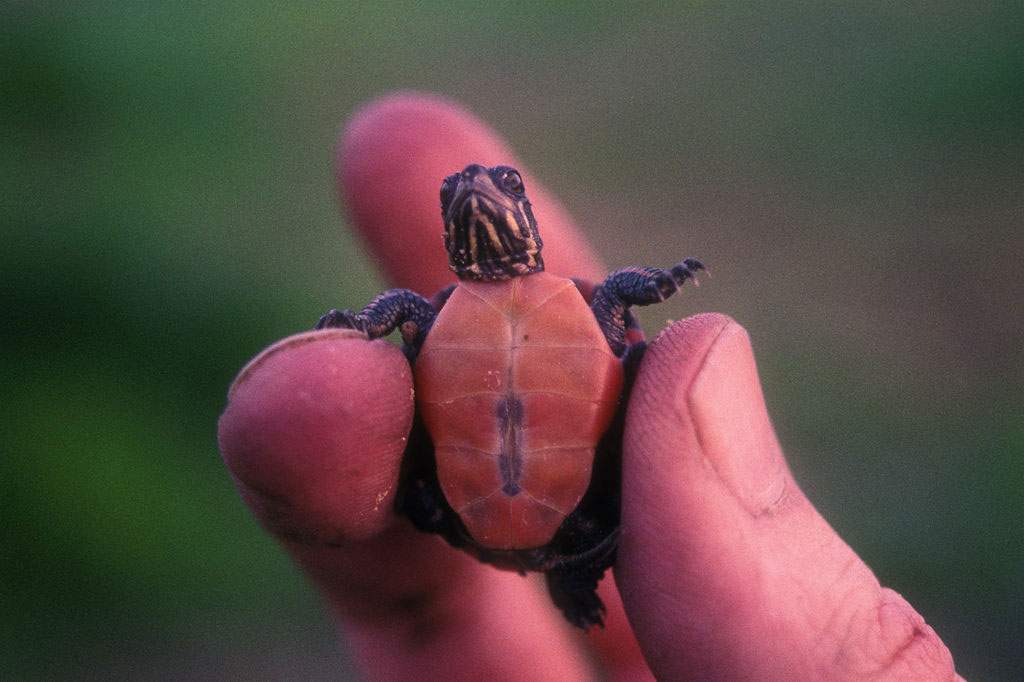
Without antifreeze, the water in your car's radiator would probably freeze during the winter. Although painted turtles don't have much else in common with automobiles, their wintertime coping strategies include antifreeze, too.
Warm Turtles
Newly hatched painted turtles often spend the first winter of their lives in shallow nests, where they are exposed to
temperatures so low that their bodies freeze. Ice forms on the outer skin and grows inward toward the body core, gradually cutting off blood circulation.
Eventually, blood flow stops completely, as do muscle movement, breathing, and heartbeat. But as soon as the temperature rises and the young turtles thaw out, they recover fully.
Painted Turtles
Painted turtles can survive freezing partly because they can control the formation of ice in their bodies. Dropping temperatures cue the turtle's liver to produce special proteins that cause very small ice crystals to form in fluids such as blood plasma and urine. Because the ice crystals are kept very small, damage to surrounding tissues is minimized.
But no matter how small they are, ice crystals cause irreparable damage if allowed to form inside cells. So another adaptation allows painted turtles to protect their cells from ice damage. When ice begins to form outside the cells, the cells produce sugar compounds called cryoprotectants. Cryoprotectants protect the cells from damage and prevent the water inside the cells from freezing, much like the antifreeze in your car's radiator.









